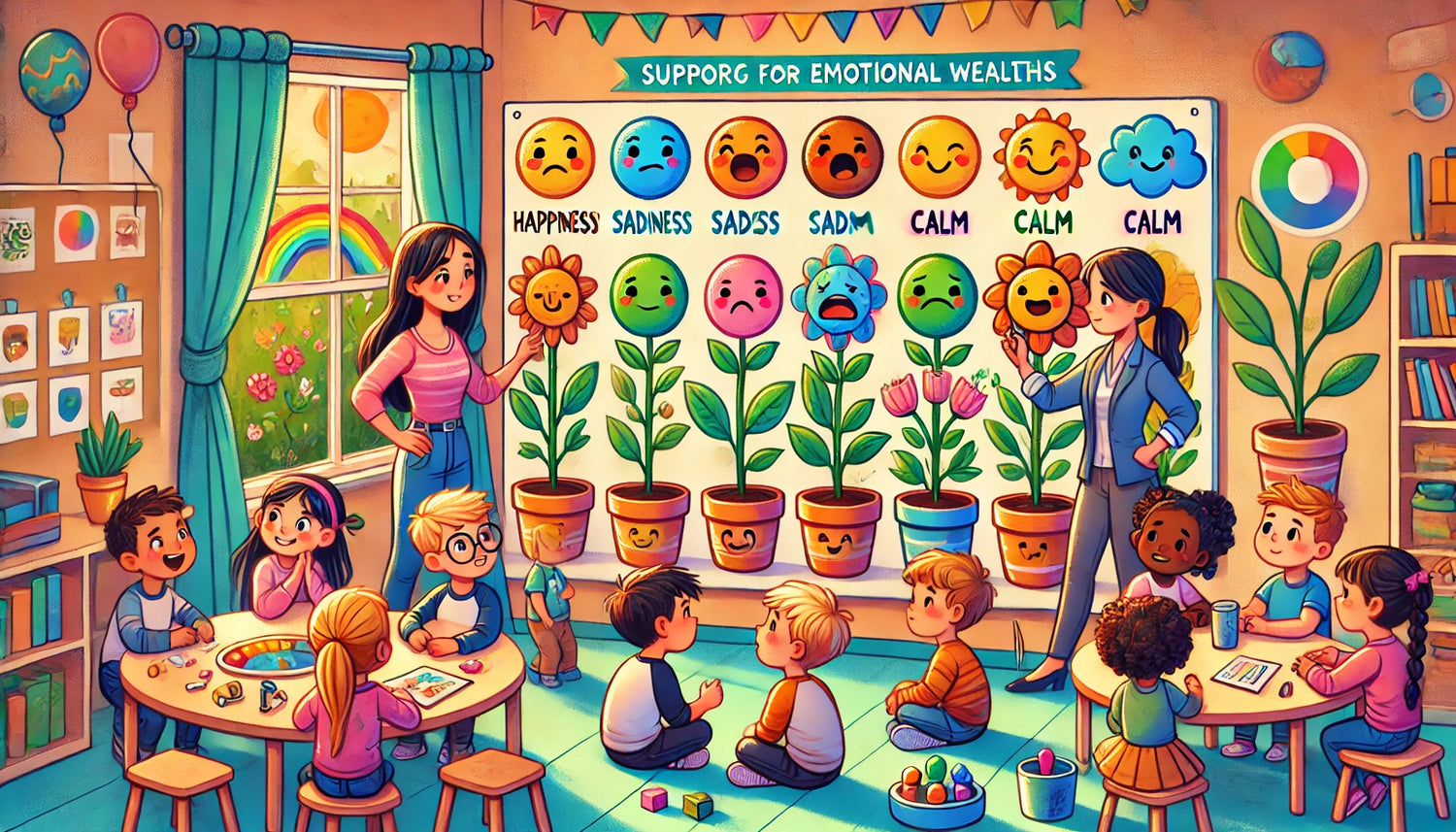Expression and Coping Skills in Elementary Students
Supporting students in Grades K-5 with their mental health involves creating an environment where emotions are not only acknowledged but also actively expressed, understood, and nurtured. For educators, counselors, and community programs, teaching coping skills in an age-appropriate, engaging way can lay the foundation for children’s lifelong mental wellness. This project, The Feelings Garden, is designed as a hands-on, creative activity to help young students identify, express, and manage their emotions, while fostering a sense of community in the classroom or counseling group.
Project Overview: The Feelings Garden
Objective:
To provide students with a safe, interactive way to express their emotions, recognize how feelings change over time, and practice coping skills through the metaphor of a growing garden. By “planting” their emotions and “tending” to them, students learn that emotions, like plants, need care and patience to flourish positively.
Materials Needed:
- Colored paper or small wooden sticks (for "plant markers")
- Markers or crayons
- A large poster board or space on a classroom wall (for the garden backdrop)
- Small seed packets or flower stickers for each student
- Optional: mini flowerpots or recycled cups to make individual “emotion planters”
Instructions:
-
Introduce the Garden Concept
Begin with a group discussion about emotions, explaining that everyone has different "feelings seeds" inside them that grow throughout the day. Just like plants need sun, water, and care, our emotions need positive attention and actions. -
Creating Feeling Markers
Each student chooses a color to represent different emotions (e.g., blue for calm, yellow for happiness, red for frustration, green for excitement). They’ll create “feeling markers” by drawing faces or symbols to represent these emotions on their colored paper or sticks. -
Planting the Seeds
Students then “plant” their emotions in the garden by attaching the markers to the poster board or placing them in their individual planters. Each day, they’ll add a new “seed” or sticker based on how they feel. -
Tending to the Garden
Instruct students on “watering” their emotions by using simple coping skills:- Deep Breathing: “When you’re frustrated or angry, give your emotion a drink of calm by breathing in deeply, holding it, and releasing slowly.”
- Positive Thoughts: “When you’re feeling sad, think of a happy memory to shine a little sunlight on your feelings.”
- Talking to a Friend: “When you’re nervous, it can help to share your feelings, just like plants grow stronger together in a garden.”
As they practice these skills, students “tend” to their garden, helping it grow in healthy, positive ways.
-
Reflect and Discuss
Set aside time weekly for students to share about their emotions garden, discussing which emotions grew the most and how they tended to their feelings. This reflection helps students see how emotions are natural, can be managed, and change with the right care.
Connection to the Pretherapy Box: Preparing Before You Need to Repair
To extend this emotional wellness initiative, consider introducing a Pretherapy Box as part of your school or community program. This box acts as a toolkit for students, filled with sensory items, activity ideas, and guidance for managing big emotions and challenges. For students with ADHD or high energy, tools like textured stress balls, noise-canceling earphones, or visual schedules can offer ways to self-regulate before they feel overwhelmed.
The Pretherapy Box slogan, “Prepare Before You Need to Repair,” aligns with this garden project by reinforcing proactive emotional care. By preparing students with easy-to-use, everyday coping tools, we give them valuable resources to navigate challenges independently, setting them up with essential emotional skills even before formal therapeutic support might be needed.
Through initiatives like The Feelings Garden and the Pretherapy Box, schools and community programs can build a culture of emotional wellness, where students are empowered to identify and care for their emotions, creating a foundation of mental resilience that will benefit them throughout their educational journey and beyond.





Leave a comment
This site is protected by hCaptcha and the hCaptcha Privacy Policy and Terms of Service apply.